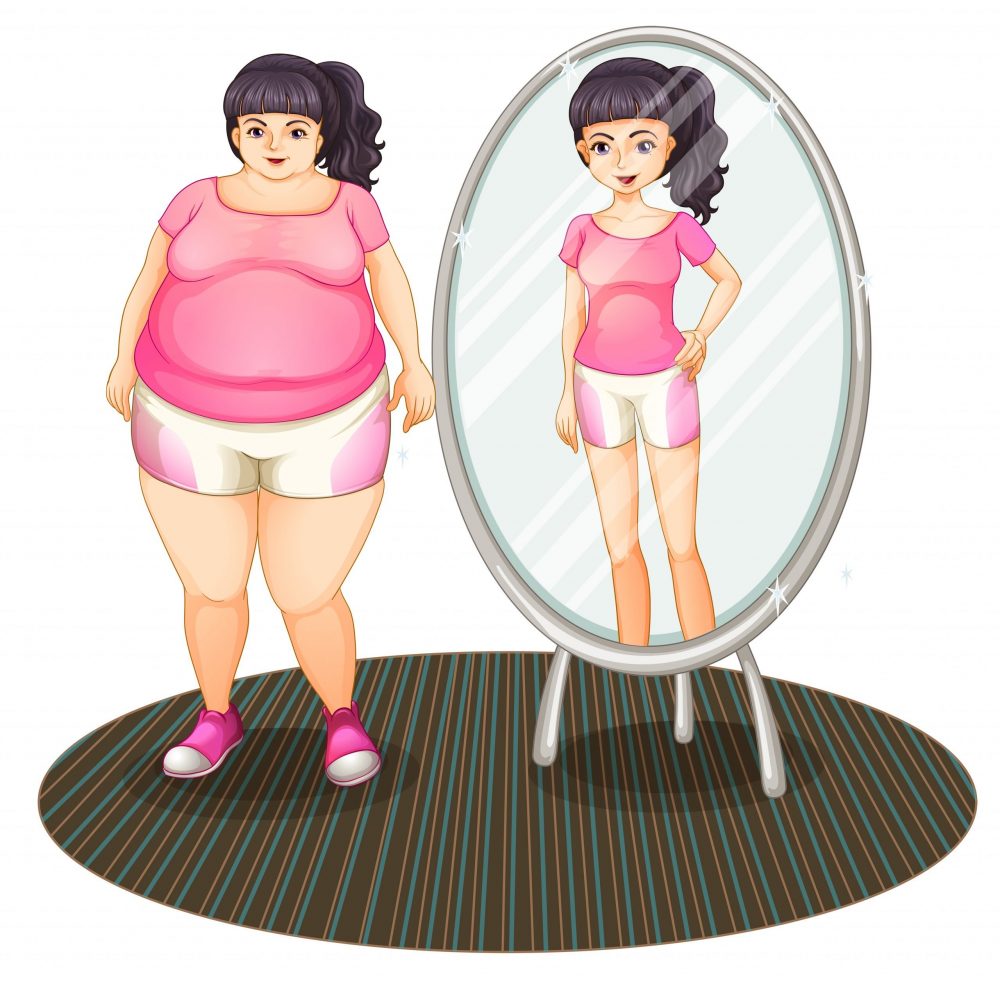
What is Obesity ?
According to the World Obesity Federation (WOF),
“Obesity is a ‘complex,’ ‘misunderstood,’ ‘serious,’ and ‘chronic’ disease that requires prevention and management in society irrespective of age, gender, or race”.
Obesity is the accumulation of excess, unnecessary, and disease-producing fat inside the vital organs and underneath the skin.
It is a preventable and treatable chronic progressive disease that isn’t just a cosmetic concern but a complex one that increases the risk of medical conditions including heart disease, type II diabetes, arthritis, high blood pressure, infertility, metabolic syndrome, PCOS, stroke, depression, lung disease, and certain cancers.
Are you Suffering from Obesity?
According to The Center for Disease Control and Prevention (CDC),
“Weight that is higher than what is considered as a healthy weight for a given height is described as overweight or obese.”
Obesity is measured using Body Mass Index (BMI) which indicates excess body weight, class of obesity, and ideal weight. BMI measures a person’s weight in relation to their height.
Before exploring treatment options (surgical or non-surgical), It is important to know your BMI because that is what defines the degree of obesity and therefore determines what type of treatment will be the most effective for you.
The classification for Asians is shown in the following table:
| Category | BMI |
| Underweight | Less than 18.5 |
| Normal Weight | 18.5 to 23.5 |
| Overweight | 23.6 to 27.5 |
| Obesity Class 1 (Obesity) | 27.6 to 32.5 |
| Obesity Class 2 (Serious Obesity) | 32.6 to 37.5 |
| Obesity Class 3 (Severe /Morbid Obesity) | 37.6 or higher |
To calculate your BMI, click here.
Why treat Obesity?
Obesity is dangerous because people suffering from obesity may die 5-10 years earlier than expected. Obesity increases the risk of following diseases:
- Type 2 diabetes mellitus
- Coronary heart disease i.e., heart attack
- High blood pressure
- Stroke i.e. paralysis
- PCOS in women i.e. growth of facial hair, skin discoloration, infertility and irregular periods etc.
- High cholesterol and triglycerides
- Fatty liver disease (NAFLD, NASH) i.e. hepatitis, liver failure/cirrhosis leading to liver cancer.
- Obstructive sleep apnea (OSA) & OHS i.e. snoring, poor sleep at night, dozing off during the day or even during driving and difficult to treat high blood pressure.
- Joints and back pain e.g. Osteoarthritis, Gout (high uric acid) and early knee and hip replacements etc.
- GERD (acid reflux) and gallstones i.e. Heartburn, water brash, abdominal pain, indigestion.
- Infertility, higher incidence of C-section, diabetes during pregnancy.
- Cancers (breast, colon, womb (endometrial), gallbladder, kidney, and liver).
- Depression, body shame and guilt, social isolation, lower work achievement, bullying, blame from family, relatives and co-workers etc.
- Urinary Incontinence
- Poor quality of life
- Normal tasks become harder, as movement is more difficult.
- One gets tired more quickly and finds him/ her short of breath.
- Public transport seats and cars may be too small
- Difficult to maintain personal hygiene.
What is the Treatment?
Weight loss or bariatric surgery is the most effective and durable solution capable of achieving sustainable and long-lasting weight loss. It not only sheds off stubborn kilos but also helps to prevent, treat, resolve, and manage hazardous diseases, minimize medications, and reduce the financial burden of health expenses.
While losing weight can be frustrating and difficult, carrying excess weight can increase the risk of many life-threatening health problems including heart disease, type II diabetes, high blood pressure, metabolic syndrome, stroke, depression, lung disease, and certain cancers.
According to the Centers for Disease Control and Prevention (CDC), USA, losing just 5–10% of body weight can bring significant health benefits. Common treatments for overweight and obesity include losing weight through dietary changes, being more physically active, and avoiding crash-diets.
However, some people who are overweight or suffer from obesity are unable to lose enough weight to improve their health or maintain long-term weight loss. In such cases, we recommend other treatments like customized diet plans, medical treatment, and weight loss surgery.
Frequently Asked Questions
What causes Obesity?
“You eat more and exercise less!” NOT always!
Although it is still a common belief and what scientists initially thought.
Genetics: genes can affect the amount of fat that is stored in your body, its distribution in different parts, how efficiently it converts to energy and how easily it burns during exercise.
Family/Inheritance: if one or both parents are obese, the risk of their children being obese is increased. Not just because of genetics but also due to similar lifestyles and habits.
Inactivity: burning fewer calories means storing excess food as fat.
Unhealthy diet: high in calories, lacking fruits and vegetables, excessive fast food with high-calorie beverages and oversized portions contribute to weight gain.
Medical problems: obesity can be traced to a medical cause, such as Prader-Willi syndrome, Cushing’s syndrome, and other conditions. Medical problems, such as arthritis leads to the decreased activity which may result in weight gain.
Certain medications: some antidepressants, diabetes medications, antipsychotic medications, steroids, and Beta-blockers.
Lack of sleep: Not getting enough sleep or getting too much sleep can cause changes in hormones that increase your appetite. You may also crave for sugar dense food, which contributes to weight gain.
Pregnancy: During pregnancy, a mother’s weight increases. This weight gain may contribute to the development of obesity in the future.
Why is Obesity dangerous?
People suffering from obesity may die 5-10 years earlier than expected.
Obesity increases the risk of following diseases:
- Type 2 diabetes mellitus
- Coronary heart disease i.e., heart attack
- High blood pressure
- Stroke i.e. paralysis
- PCOS in women i.e. growth of facial hair, skin discoloration, infertility and irregular periods etc.
- High cholesterol and triglycerides
- Fatty liver disease (NAFLD, NASH) i.e. hepatitis, liver failure/cirrhosis leading to liver cancer.
- Obstructive sleep apnea (OSA) & OHS i.e. snoring, poor sleep at night, dozing off during the day or even during driving and difficult to treat high blood pressure.
- Joints and back pain e.g. Osteoarthritis, Gout (high uric acid) and early knee and hip replacements etc.
- GERD (acid reflux) and gallstones i.e. Heartburn, water brash, abdominal pain, indigestion.
- Infertility, higher incidence of C-section, diabetes during pregnancy.
- Cancers (breast, colon, womb (endometrial), gallbladder, kidney, and liver).
- Depression, body shame and guilt, social isolation, lower work achievement, bullying, blame from family, relatives and co-workers etc.
- Urinary Incontinence
- Poor quality of life
- Normal tasks become harder, as movement is more difficult.
- One gets tired more quickly and finds him/ her short of breath.
- Public transport seats and cars may be too small
- Difficult to maintain personal hygiene
Obesity is a condition or a disease?
Obesity is a chronic and progressive disease. It is not a lack of self control. Obesity is much more than a cosmetic issue. It is caused by multiple environmental, genetic and life style factors.
It is an extremely costly disease in terms of finance, individual well being and societal health. It reduces longevity.
Obesity demands life long treatment and control.
How can we measure obesity? BMI?
The measure of excess fat stored in the body is known as Body Mass Index (BMI). The weight in kilograms is divided by the square of height in meters.
For eg if your wt is 105 kg and ht is 5 ft 6 inches (1.67 meters).
BMI = 105 /1.67 X 1.67 = 37.76 which means morbid obesity.
BMI Criteria for Asians is as follows:
| Less than 18.5 | Under weight |
| 18.5 to 23.4 | Normal weight |
| More than 27.5 | Class 1 Obese |
| More than 32.5 | Class 2 Obese
Severe Obesity |
| More than 37.5 | Class 3 Obese
Morbid Obesity |
| More than 47.5 | Super Obese |
| More than 60 | Super Super Obese |
Another way to measure is the ratio of waist to hip called WHR or Waist –Hip Ratio. For eg. A person with 30 inch waist and 38 inch hips as a WHR of about 0.78. According to the World Health Organization (WHO) , WHR greater than one is indicative of a higher risk of getting a heart disease. WHR of 0.90 or less in men and 0.85 or less in women is considered healthy WHR.





